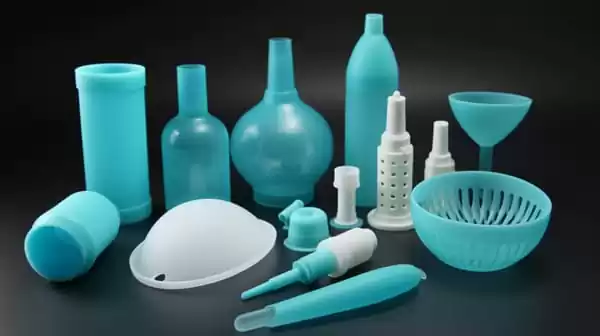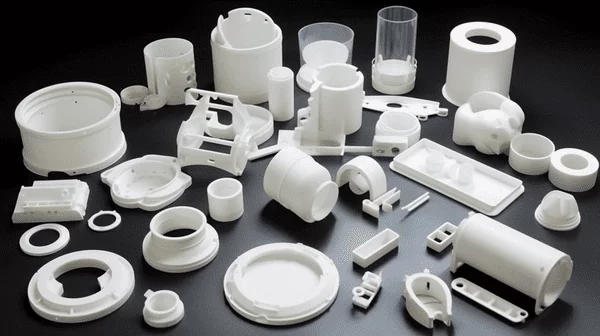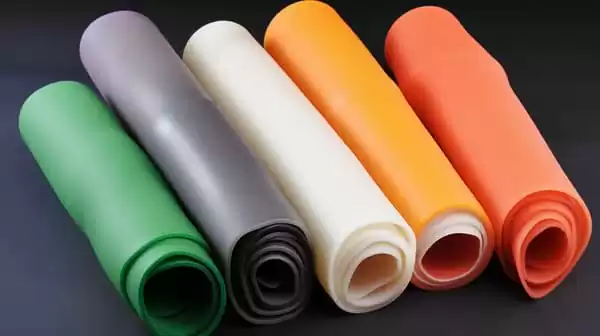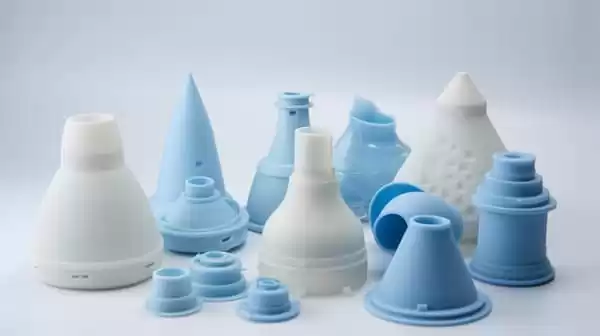Introduction
In the dynamic realm of healthcare innovation, certain substances distinguish themselves through unparalleled attributes and multifaceted uses. Silicone rubber, in this context, is a prominent figure, catalyzing transformative shifts in the conceptualization and fabrication of medical apparatus. Esteemed for its tenacity, pliancy, and harmonious interaction with the human body, silicone rubber has established itself as a pivotal element in the fabrication of a diverse spectrum of medical instruments.

The essence of its importance can be encapsulated in three key terminologies: medical grade silicone rubber, liquid silicone rubber (LSR), and silicone elastomers. Medical silicone rubber is meticulously engineered to adhere to the rigorous standards of the healthcare domain, guaranteeing safety and patient compatibility. Liquid-form silicone rubber manifests as a more malleable variant of silicone, renowned for its adeptness in the molding process, enabling the creation of complex medical components with precision and efficiency. Silicone elastomers, an umbrella term for various silicone-based substances, are lauded for their distinct characteristics such as formidable resistance to extreme temperature variations and adaptability, rendering them suitable for a multitude of medical uses.
The incorporation of silicone rubber into medical technology not only signifies a monumental leap in material science but also paves the way for groundbreaking applications in medical devices. Spanning from implants to advanced surgical instruments, the adaptability and safety of silicone rubber have rendered it an essential component in contemporary medical practice.
In the ensuing segments, we will embark on an exploratory journey into the myriad applications of silicone rubber within the medical sphere, illuminating its role in sculpting the future of medical treatment.
II. The Multifaceted Nature of Liquid Silicone Rubber (LSR) in Medical Fabrication
A. The Role of LSR in Health Care Production
In the sphere of health care manufacturing, Liquid Silicone Rubber (LSR) has surfaced as a revolutionary substance, distinguished by its malleability and exceptional efficacy in pivotal roles. Essentially, LSR is a high-consistency silicone rubbers refined variant of , manipulated in its liquid phase, which seamlessly aligns with the sophisticated process of liquid injection moulding. This methodology entails the infusion of LSR into a thermal mold, therein solidifying and adopting the requisite configuration with astounding accuracy. LSR’s multifaceted nature is notably amplified when juxtaposed with conventional substances and antiquated techniques previously employed in health care fabrication.

Distinct from compounds like thermoplastic elastomers and other synthetic polymers, LSR sustains its qualities without deterioration over prolonged periods. This attribute is crucial in medical contexts where materials are recurrently subjected to rigorous sterilization. Outdated technologies, constrained by the material’s physical attributes and molding capacities, are outperformed by LSR’s proficiency to fill exceedingly intricate and complex mold designs, without forfeiting the material’s integrity or the operational excellence of the end product.
B. Benefits of Employing LSR
The plethora of benefits presented by Liquid Silicone Rubber in the creation of medical devices is extensive:
Exactitude: The fluidic essence of LSR empowers it to occupy even the most labyrinthine and minuscule mold spaces, yielding components of high precision and uniformity. This aspect is imperative in medical device production, among other materials where the smallest variance can lead to consequential effects.
Thermal Resilience: LSR retains its physical characteristics over an wide temperature ranges. This trait is indispensable for medical apparatuses that must endure the elevated temperatures of sterilization while adapting to the fluctuating conditions of diverse medical settings.
Biocompatibility: Arguably, the most noteworthy merit of LSR is its unparalleled biocompatibility. Being hypoallergenic, inert, and non-toxic, it is deemed safe for extended interaction with human tissue. This quality is crucial for a wide array of medical applications, ranging from surgical instruments to implantable devices, where patient safety is of the utmost concern.
The multifaceted nature and benefits of Liquid Silicone Rubber highlight its essential role in the medical manufacturing realm. By providing a synergy of precision, thermal resilience, and biocompatibility, LSR emerges as a material that not only fulfills the rigorous demands of medical applications but also expands the horizons of what is achievable in medical device innovation.

III. Utilizations of Silicone Elastomer in Therapeutic Apparatuses
A. Embeddable Mechanisms
The utilization of silicone elastomer, specifically in its Liquid Silicone Rubber (LSR) form, in embeddable therapeutic apparatuses, underscores its unmatched safety and efficacy. Instruments like auricular blockers, auditory enhancers, and volumetric catheters extensively employ silicone rubber for their fabrication.
Auricular Blockers and Auditory Enhancers: These apparatuses necessitate materials that are not only innocuous for extended interaction with the delicate inner ear tissues but also adept at delivering superior performance. Silicone elastomer, renowned for its non-allergenic attributes and pliability, emerges as the exemplary selection. It furnishes comfort for the user whilst preserving the device’s integrity, even within the moist and sensitive milieu of the ear.
Volumetric Catheters: In more pivotal medical scenarios, such as with volumetric catheters, LSR is of paramount importance. The material’s tenacity and malleability are crucial, ensuring these catheters traverse the vascular maze without inflicting harm or discomfort. LSR’s resilience against various physiological fluids and its stability under duress are pivotal in augmenting the functionality and safety of these mechanisms.
B. Therapeutic Equipment and Constituents
Silicone elastomer’s role transcends embeddable mechanisms, extending to a multitude of therapeutic equipment and constituents, like infusive sheaths and assay enclosures, where endurance and resistance to harsh conditions are essential.
Infusive Sheaths: Utilized in the administration of intravenous therapies, infusive sheaths crafted from silicone rubber amalgamate flexibility with robustness. These characteristics are vital in guaranteeing uniform performance and patient solace during extended usage.
Assay Enclosures: Within laboratory environments, assay enclosures necessitate materials capable of enduring diverse environmental extremities, from scorching temperatures to chemical interactions. Silicone elastomer, with its superior thermal steadiness and resistance to chemical aggressors, is the ideal choice. It ensures that the assay enclosures maintain reliability and safety across various experimental scenarios.
The myriad applications of silicone elastomer in both embeddable mechanisms and therapeutic equipment underscore its adaptability and the pivotal role it plays in contemporary medicine. By elevating the functionality and safety of medical devices, silicone elastomer continues to be a cornerstone material in the healthcare sector, advancing the frontiers of medical innovation and patient welfare.

IV. The Future of Silicone Rubber in the Medical Industry
A. Innovations and Potential Advancements
In the realm of medical advancements, silicone rubber stands at the threshold of a transformative era, heralded by cutting-edge innovations and prospective developments. Ongoing research is progressively revealing novel characteristics and uses of silicone rubber, foreshadowing its increased significance in the healthcare sector.
Material Enhancements: Prospective enhancements in silicone rubber may encompass refinements in both its physical and chemical attributes. These advancements could involve the fabrication of more robust variants, exhibiting superior resilience to temperature fluctuations and chemical interactions, or the creation of types exhibiting augmented biocompatibility for more delicate medical uses.
Smart Silicone Technologies: Fusing silicone rubber with nascent technologies like intelligent sensors and precision drug delivery systems represents a burgeoning domain. Envision implantable devices crafted from silicone capable of monitoring physiological parameters or dispensing medication in response to specific bodily fluctuations.
Sustainability Focus: With the medical industry’s growing cognizance of ecological footprints, forthcoming versions of silicone rubber may emphasize eco-friendly innovations. This could include the development of biodegradable silicone materials or strategies for the efficient recycling of silicone-based medical products.
B. Expanding Applications
The inherent versatility of silicone rubber implies its applications in the medical field are poised for expansion, covering a broader spectrum of medical devices and treatments.
Advanced Prosthetics: Utilizing silicone rubber to forge prosthetics that closely mimic human limbs, enhancing comfort and mobility for users, is a distinct possibility. These advancements might feature prosthetics endowed with more realistic tactile sensations or improved synergy with the user’s physiology.
Regenerative Medicine: Within regenerative medicine, silicone rubber could serve as a matrix for tissue engineering, fostering the development of new tissues or organs. Its compatibility with biological systems renders it a prime material for such applications.
Wearable Medical Devices: As wearable health technologies ascend, the utilization of silicone rubber is likely to surge, attributable to its pliability and compatibility with skin. Upcoming devices might range from sophisticated monitoring bands to therapeutic patches administering medication through the skin.
As we gaze into the future, the potential of silicone rubber in the medical industry is limitless. Its evolving capabilities, in concert with the industry’s drive towards innovation, portend its continued vital role in the creation of avant-garde medical devices and therapies.

Conclusion
In concluding our exploration of the intricate domain of silicone rubber within the medical sector, its paramount significance becomes evident. This material, far from being mere substance, has been instrumental in sculpting and advancing diverse facets of health care. Silicone rubber, with its harmonious compatibility with biological systems and its multifarious adaptability, transcends its basic form, emerging as a linchpin in the evolution of medical apparatus and methodologies.
The composite characteristics of silicone rubber — its steadfastness against thermal variances, its defiance to chemical interactions, and its pliability — have rendered it an irreplaceable cohort in the realm of medical fabrication. Silicone rubber reigns supreme, from the meticulous assembly of implantable mechanisms to the sturdy efficacy of medical paraphernalia. Its pliancy, especially in techniques such as liquid injection molding, has further entrenched its status as a trailblazer in the fabrication of medical devices.
Peering into the future, the prospects for silicone rubber appear boundless. As the medical field strides forward, the applications and novelties of silicone rubber are set to parallel this progression. Its malleability and harmony with burgeoning technologies foretell an era where medical devices are not only more efficacious but also more intricately woven into patient care.
In sum, the enduring influence of silicone rubber in the realm of medical device applications stands as a testament to its extraordinary ability to adapt to the dynamic requisites of the health sector. Its odyssey is far from its denouement; indeed, it may be on the cusp of spearheading the next significant innovation in medical technology. As our journey of discovery and expansion in medical science persists, silicone rubber is poised to continue as a pivotal architect in sculpting the future of healthcare.



